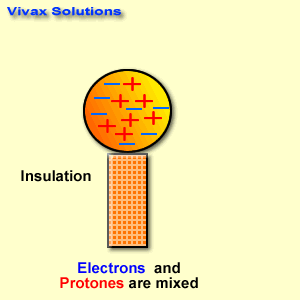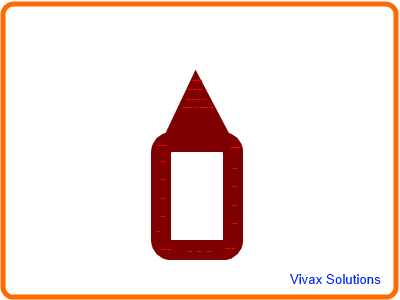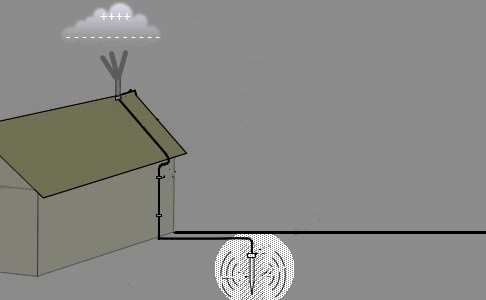Electrostatics - Induction, lightning, lightning conductor
This is a comprehensive tutorial on major branches of electrostatics with animations.
Electric Charges
There are two types of eclectic charges. They are:
- positive charges
- negative charges
The process of providing an object with these charges
is called charging.
It can be done in three different ways:
- By rubbing the objects in question - two objects
against each other
- By bringing into contact - one with a charge with an
uncharged one
- By bringing one object closer to the other, but not
touching
Charging by Electrostatic Induction
The process of providing an object with a charge,
without touching it, is called electrostatic induction.

The metal sphere is mounted on an insulating stand. The sphere has a mixture of protons and electrons. When a charged object is brought closer, the charges in it
rearrange themselves - like charges repel and unlike attract - on the sides of the sphere. Then the sphere is earthed and the free charges - not attracted to those of the external object - either move
to the earth or get neutralized by electrons that come from the earth. Once the earth connection is removed, the
sphere is positively or negatively charged - without being in contact with the charged external
object. This is electrostatic induction.
Action of Points

The electric charges on the surface of a charged object do not necessarily spread out evenly. If the curvature is not regular, for instance, the charges
tend to accumulate more at the sharper places than flat areas. As a result, the charge density at sharp points becomes large. Since like charges
repel, the electrons are emitted rapidly from sharper points. This is called action at points.
E.g.
Charged needle acts as a electron spray-gun at its tip.
Lightning
Thunder clouds carry a vast amount of negative charges at the bottom and an equal amount of corresponding positive charges at the top. When they loom
over us in the gloomy sky, positive charges are induced on the objects on the ground, as a result of electrostatic induction. The induced charges accumulate at sharper points
due to action at points. Then, suddenly a massive electric flow takes place between such a point and the cloud in question. This is called a
lightning strike or thunderbolt.
You are not supposed to hold sharp metal objects during thunderstorms, as the contribution of the phenomenon, action at points, is
well known in the process.
In tropical countries, coconut trees are often hit by lightning. Some people think their relatively-significant heights are responsible for the event. It is not. The
leaves of the tree shed some lights on the phenomenon.
They are elongated and split; as a result, the induced charges accumulate at the tips of the leaves, much more than,
as in any other tree. So, lightning strikes coconut trees very often during thunderstorms.
The author has witnessed it with own eyes while holidaying in Sri Lanka.
Please move the mouse over the image to see the damage caused by lightning to these magnificent trees.

Lightning Conductor
Lightning conductor is a very simple device in its structure, despite doing a marvellous job in saving lives and properties around the world.

It consists of a three or two metal spikes attached to a vertical rod, which in turn is connected to the Earth by a thick copper wire.
When a thunder cloud is around, it induces positive charges on the objects on the ground. Most of the induced charges prefer to reach sharp edges
to flat edges. Therefore, the induced charges accumulate at the metal spikes.
As a result, a vast flow of electrons takes place between the cloud and the ground through the lightning conductor, thanks to the high conductivity of the copper cable.
The arrangement saves both the property and the occupants from a potentially lethal damage.
Please answer the following questions.
- Only metals can be charge by electrostatic induction. Explain.
- Explain how you can charge a metal sphere positively by electrostatic induction.
- Explain the phenomenon of lightning by electrostatic induction. Why is it dangerous to hold sharp meta objects while lightning?
- You are not supposed to be under a tree while lightening. Explain the science behind it.
- You see metal chains hanging down from the bodies of petrol tankers. Explain the significance of them.
- You see metal spikes on the wings of an aircraft. What are they for?